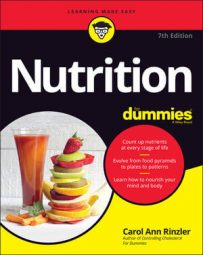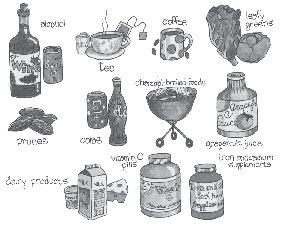A problem may arise when a food or drug brings the process to a halt by behaving in a way that interferes with your ability to digest, absorb, or use either the drug or the food. For example:
- Some drugs or foods change the natural acidity of your digestive tract so that you absorb nutrients less efficiently. For example, your body absorbs iron best when your stomach is acidic. Taking antacids reduces stomach acidity — and iron absorption.
- Some drugs or foods change the rate at which food moves through your digestive tract, which means that you absorb more (or less) of a particular nutrient or drug. For example, eating prunes (a laxative food) or taking a laxative drug speeds things up so that medicines, like foods, move more quickly through your body, giving you less time to absorb either the medicine or the nutrients in the food.
- Some drugs and nutrients bond (link up with each other) to form insoluble compounds that your body can't break apart. As a result, you get less of the drug and less of the nutrient. The best-known example: Calcium (in dairy foods) bonds to the antibiotic tetracycline so that both move swiftly out of your body.
- Some drugs and nutrients have similar chemical structures. Taking them at the same time fools your body into absorbing or using the nutrient rather than the drug. One good example is Coumadin (the generic version of Warfarin, a drug that keeps blood from clotting) and vitamin K (a nutrient that makes blood clot). Eating lots of vitamin K–rich leafy greens while taking Warfarin counteracts the medicine's ability to prevent blood clots.
- Some foods contain chemicals that either lessen or intensify the natural side effects of certain drugs. For example, the caffeine in coffee, tea, and cola drinks reduces the sedative effects of antihistamines and some antidepressant drugs but increases the nervousness, insomnia, and shakiness common with pills such as cold medications containing caffeine or a decongestant (an ingredient that temporarily clears a stuffy nose).


